 | ||
Similar | ||
Amaro (Italian for "bitter") is an Italian herbal liqueur that is commonly drunk as an after-dinner digestif. It usually has a bitter-sweet flavour, sometimes syrupy, and has an alcohol content between 16% and 40%.
Contents
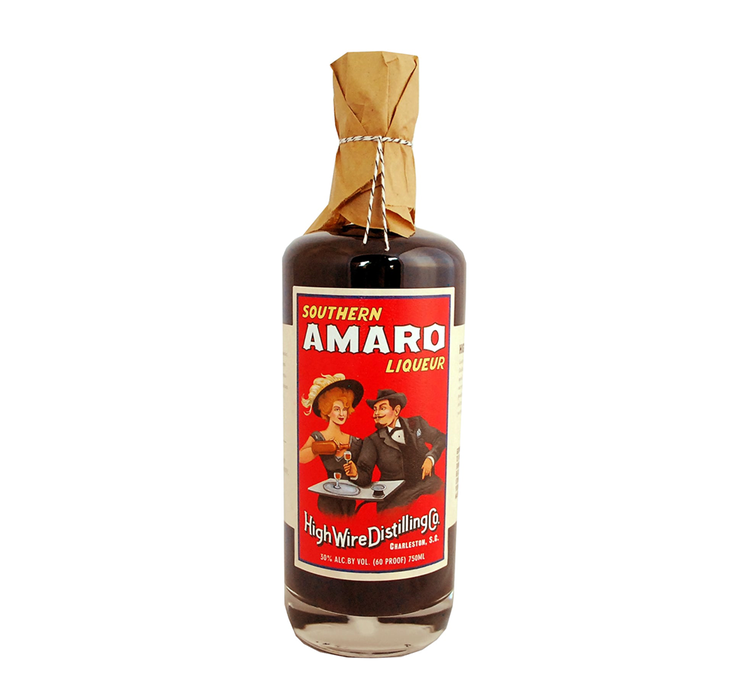
Similar liqueurs have traditionally been produced throughout Europe. There are local varieties in Germany (where they are called Kräuterlikör), in Hungary, the Netherlands, and France. But the term amaro is applied only to Italian products of this kind.
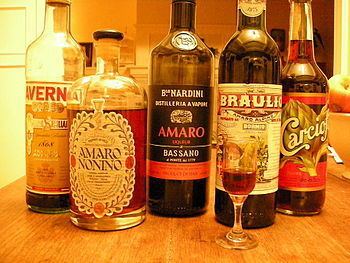
Amaro is typically produced by macerating herbs, roots, flowers, bark, and/or citrus peels in alcohol, either neutral spirits or wine, mixing the filtrate with sugar syrup, and allowing the mixture to age in casks or bottles.

Dozens of varieties are commercially produced, the most commonly available of which are Averna, Ramazzotti, Lucano, and Montenegro.
Many commercial bottlers trace their recipe or production to the 19th century. Recipes often originated in monasteries or pharmacies.
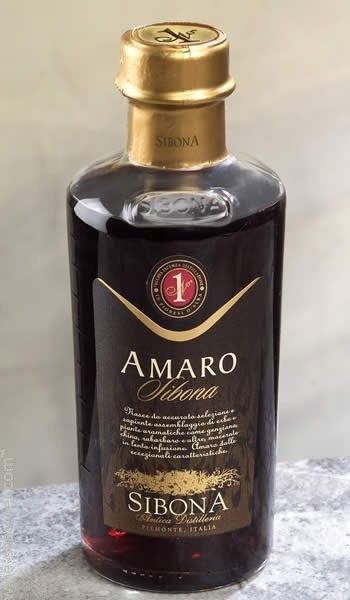
Amaro is typically drunk neat, sometimes with a citrus wedge. It may also be drunk on ice or with tonic water.
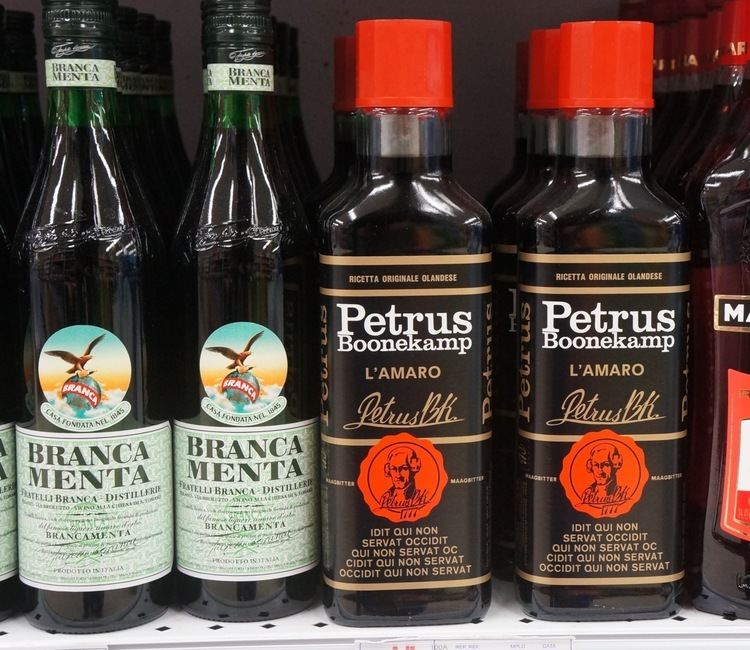
Amaro should not be confused with amaretto, another Italian liqueur that is sweet and flavoured with almonds or with the pits of drupe fruits such as apricots. Nor should it be confused with amarone, a rich Italian dry red wine from Valpolicella.
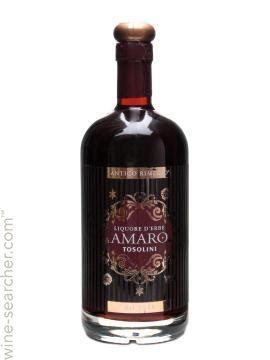
Flavourings
Amaro is flavoured with several (sometimes several dozen) herbs and roots. Some producers list their ingredients in detail on the bottle label. Herbs used for flavouring may include any of the following: gentian, angelica, cardoon, cinchona (china), lemon balm (melissa), lemon verbena (cedrina), juniper, anise, fennel, zedoary, ginger, mint, thyme, sage, bay laurel, citrus peels, licorice, cinnamon, menthol, cardamom, saffron, rue (ruta), wormwood (assenzio), and elderflowers (sambuco).
Styles
Brands
The following is a list of some of the notable commercial brands:
